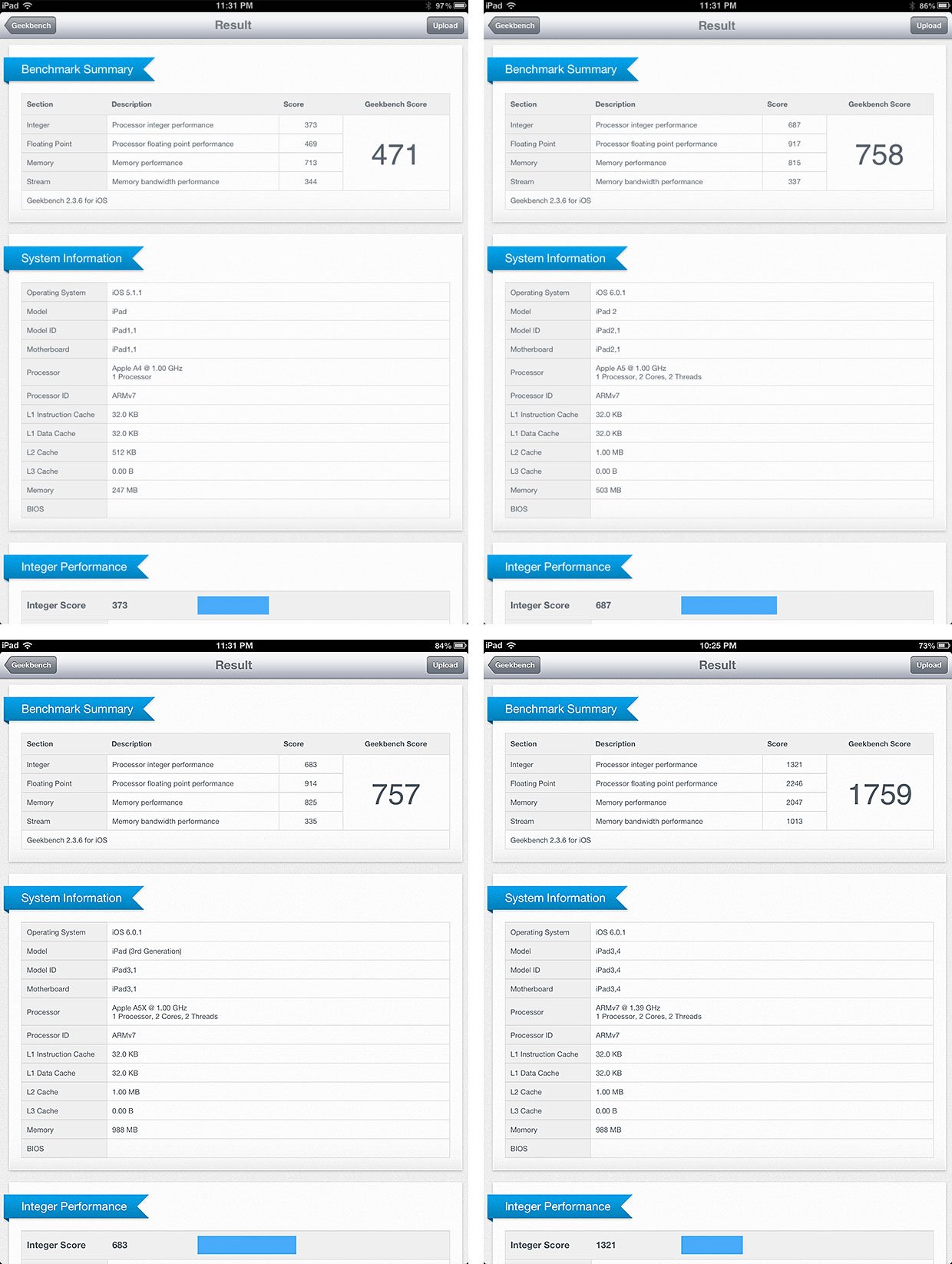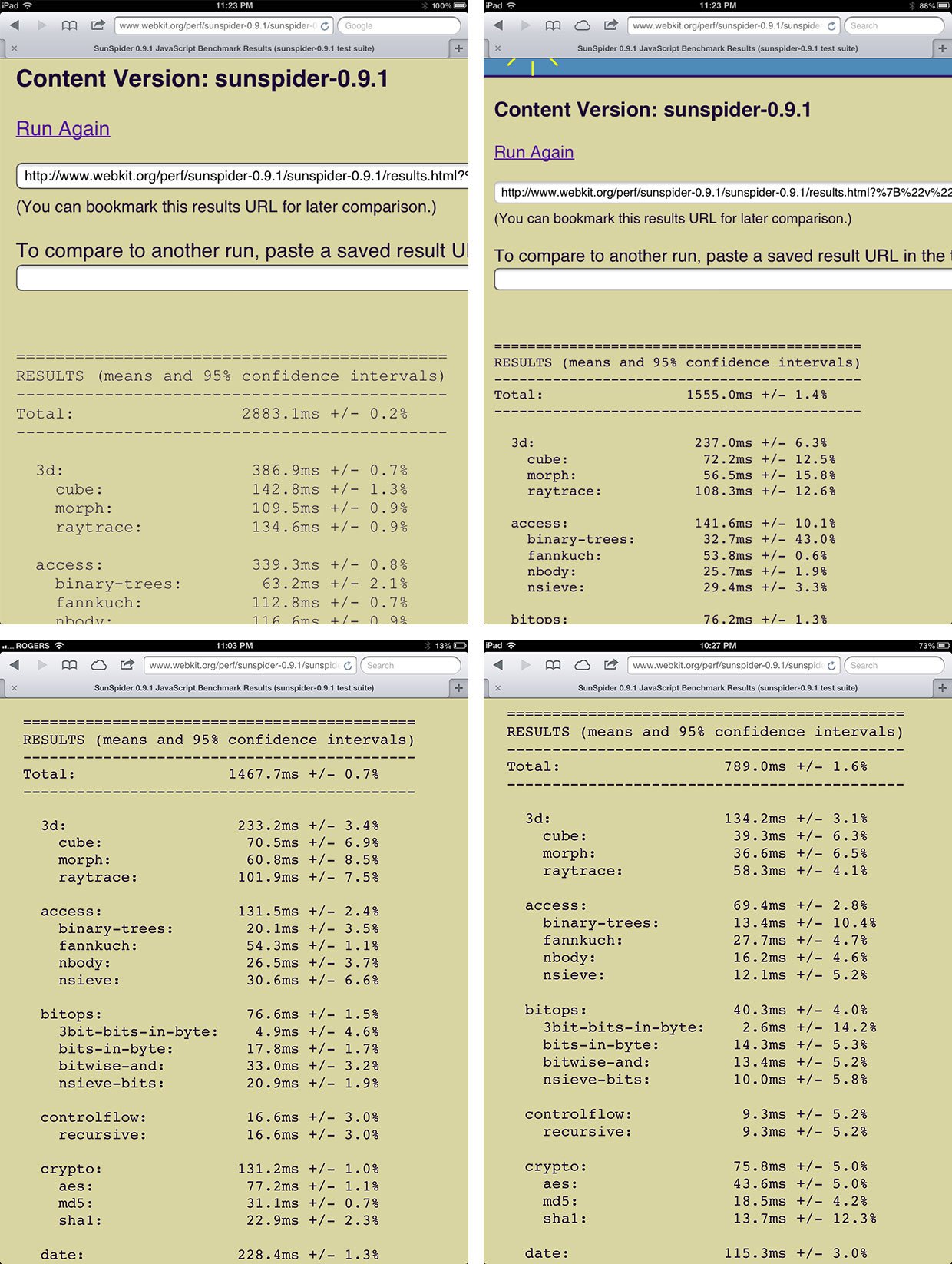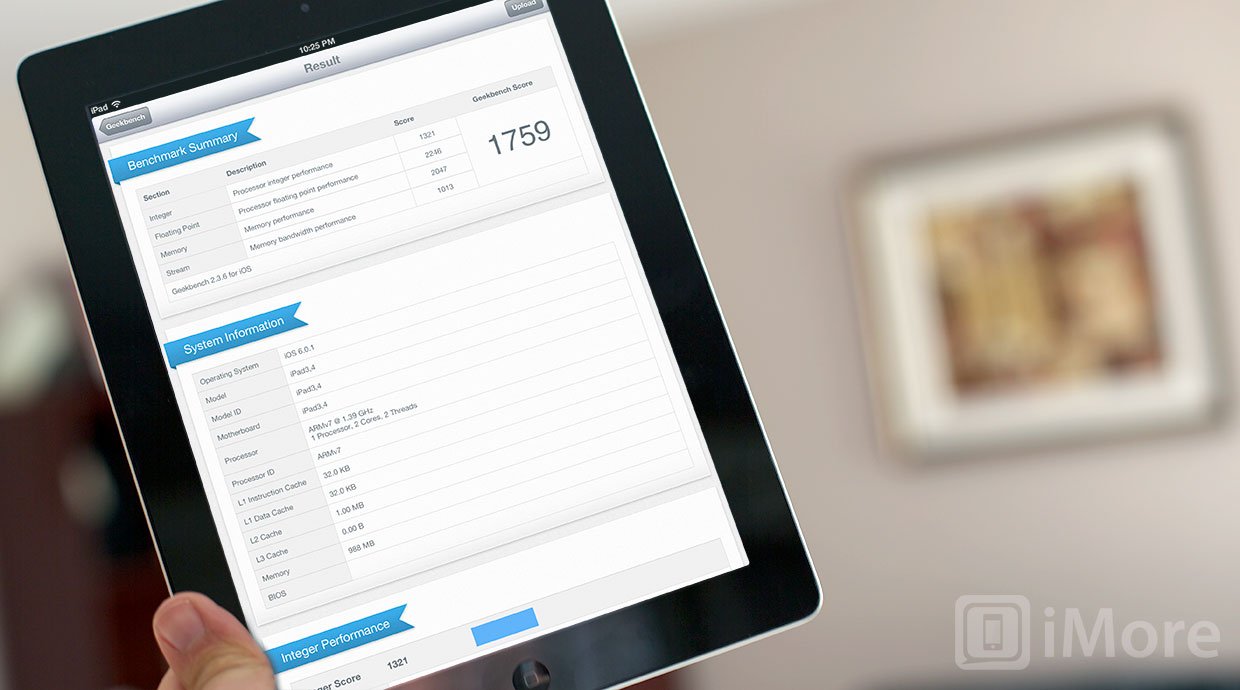The iPad 4 has an Apple A6X system-on-a-chip (SoC) is marketed as twice as fast, both in central and graphics processing, as the iPad 3 released only 7 short months ago. Apple's custom, manually-set ARM v7s processor -- called Swift -- remains the 32nm CMOS dual-core beast found in the iPhone 5, but it's been cranked up to 1.4 GHz. The X in the iPad 4's A6X once again represents a quad-core graphics processor, this time the PowerVR SGX554MP4. On spec, that's some serious fire-power.
The iPad mini, by contrast, has the same die-shrunk Apple A5 SoC found in the iPad 2. That's a 1GHz dual-core ARM Cortex A9 and PowerVR dual-core SGX543MP2. But the iPad mini also has the same 1024x768 display as the iPad 2. It's smaller but denser, going from 9.7-inches to 7.9 inches, and 132 ppi to 163 ppi, but it's the raw pixel count here that makes the difference.
Retina comes at a price, and that price is performance for the first generation devices that have to support it. The iPad 3, iPhone 4, the iPod touch 4, even the Retina MacBook Pros were and are maxed out trying to push all those pixels. Once that's done, though, once the price has been paid, however, performance improvements go back to where they belong -- making things feel faster.
So, even with the older, less powerful Apple A5, the iPad mini should fly. But will the new A6X help the iPad 4 do likewise?
Benchmarks aren't that useful for humans, but they do provide some amount of relative measure, and a way to tell if your particular device has a problem (i.e. it's way slower than expected.) So, here's what the difference in CPU looks like on Geekbench 2 between the iPad 1, iPad 2 (top left and right), iPad 3, and iPad 4 (bottom left and right).

Those are pretty close to Geekbench's standard listings of 454, 781, 790, and 1755.
Here're SunSpider results for JavaScript rendering, which try to give an idea of how code-heavy sites like FaceBook or Google Docs will perform.

That's 454, 781, and 790 compared with 1755, which is a numerically impressive jump.
More importantly, however, the video up top shows what the iPad 4 and iPad mini look like in real-world situations like booting up, rendering web pages, and launches apps, compared against the iPad 3, iPad 2, iPad 1, iPhone 5, and iPod touch 5. They're ludicrously unscientific, but perception is reality and how something works, day to day, is far more important than how it looks on the spec sheet.
As you can see, the difference looks much bigger in numbers than it turns out to be in daily usage. The iPad mini was, as expected, every bit as good as the iPad 2. With the iPad 4, the best way I can phrase it after using it side by side with the iPad 3, is that you don't really notice much if any speed improvement, you just notice much less lag. Everything launches and moves at about the same pace, it just doesn't stick and stutter anywhere nearly as much while doing it.
It's still not perfect, mind you, but it's better.

Rene Ritchie is one of the most respected Apple analysts in the business, reaching a combined audience of over 40 million readers a month. His YouTube channel, Vector, has over 90 thousand subscribers and 14 million views and his podcasts, including Debug, have been downloaded over 20 million times. He also regularly co-hosts MacBreak Weekly for the TWiT network and co-hosted CES Live! and Talk Mobile. Based in Montreal, Rene is a former director of product marketing, web developer, and graphic designer. He's authored several books and appeared on numerous television and radio segments to discuss Apple and the technology industry. When not working, he likes to cook, grapple, and spend time with his friends and family.

